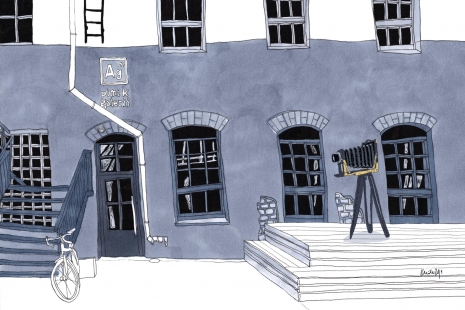The glass plate negatives used for Toomas Kalve’s photographs of Paris in late May 2008 could well be the last ones made by Crumière, Risson and Co in Flaviac in January 1940 to be successfully exposed to light through a lens. By the time the box of French photographic supplies – expiration date listed as April 1941 – emerged from an attic in Tallinn’s Nõmme district in the early 1990s, Toomas Kalve was already known for using old large-format cameras and lenses from the century of photography’s birth. Of the 24 boxes that had been hidden away for the entire Soviet occupation, he was down to the last three by spring 2008, each one containing 12 plates. Kalve had used the rest over the years for still-lifes, nudes and staged scenes.
The glass negatives had an exciting life: after the pictures were taken and developed, they travelled back to Estonia, where another layer was added to the already abundant semantic and stylistic levels – as was customary during the glass negative era, Kalve hand-coloured the sepia-tinted prints on baryte paper before finally placing them into homemade frames. In February 2009, the photographs travelled back to Paris again as part of an exhibition; and were on display for more than a year for visitors to the Estonian Embassy.





